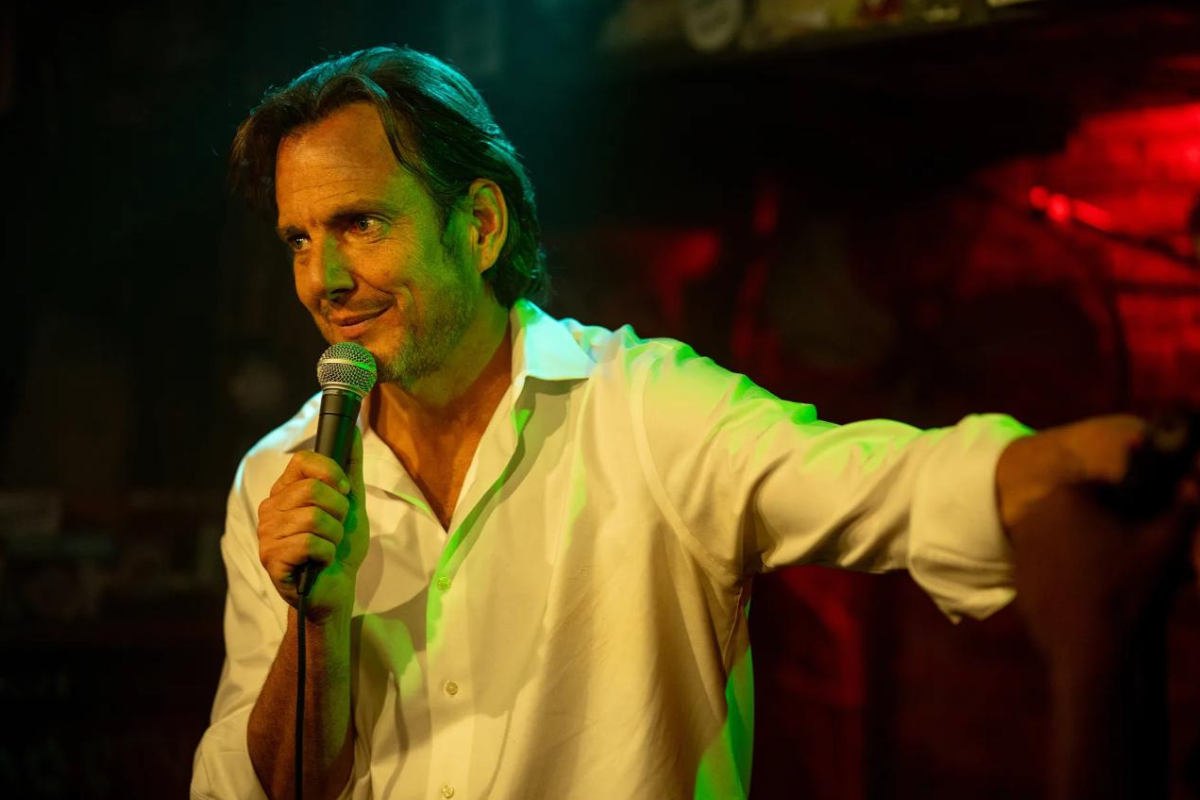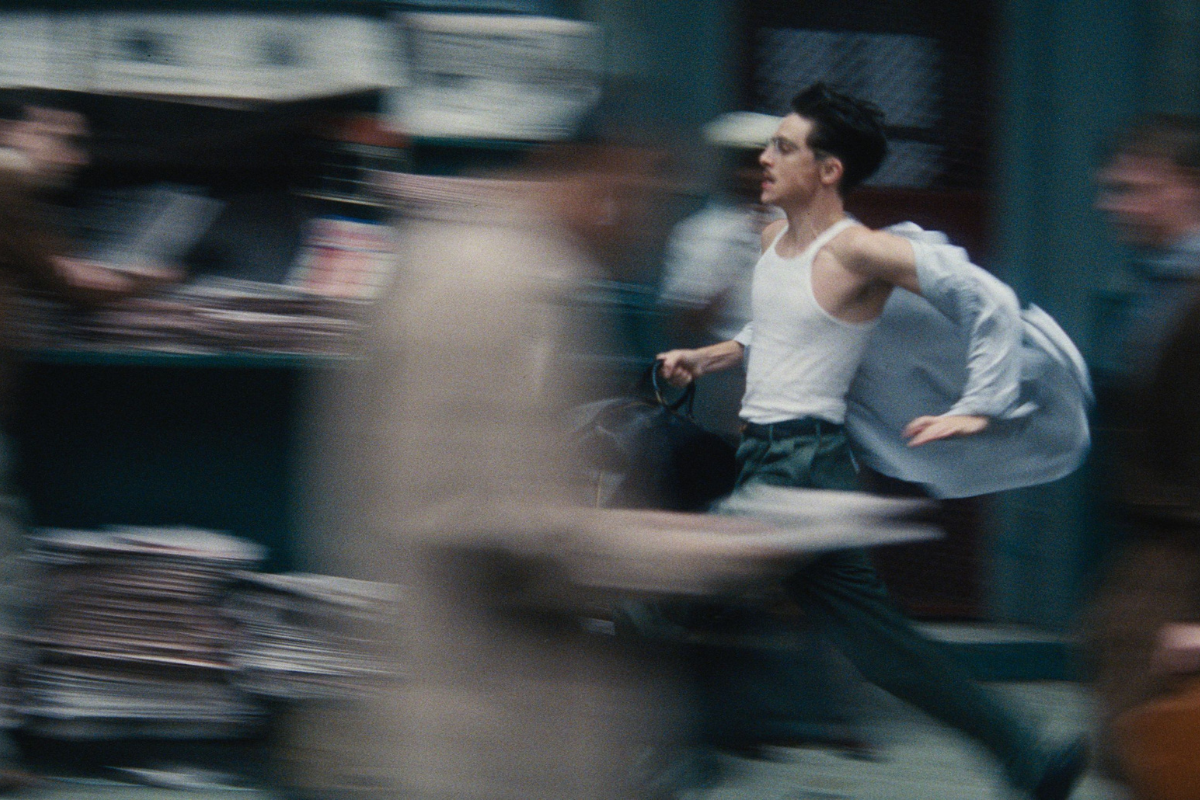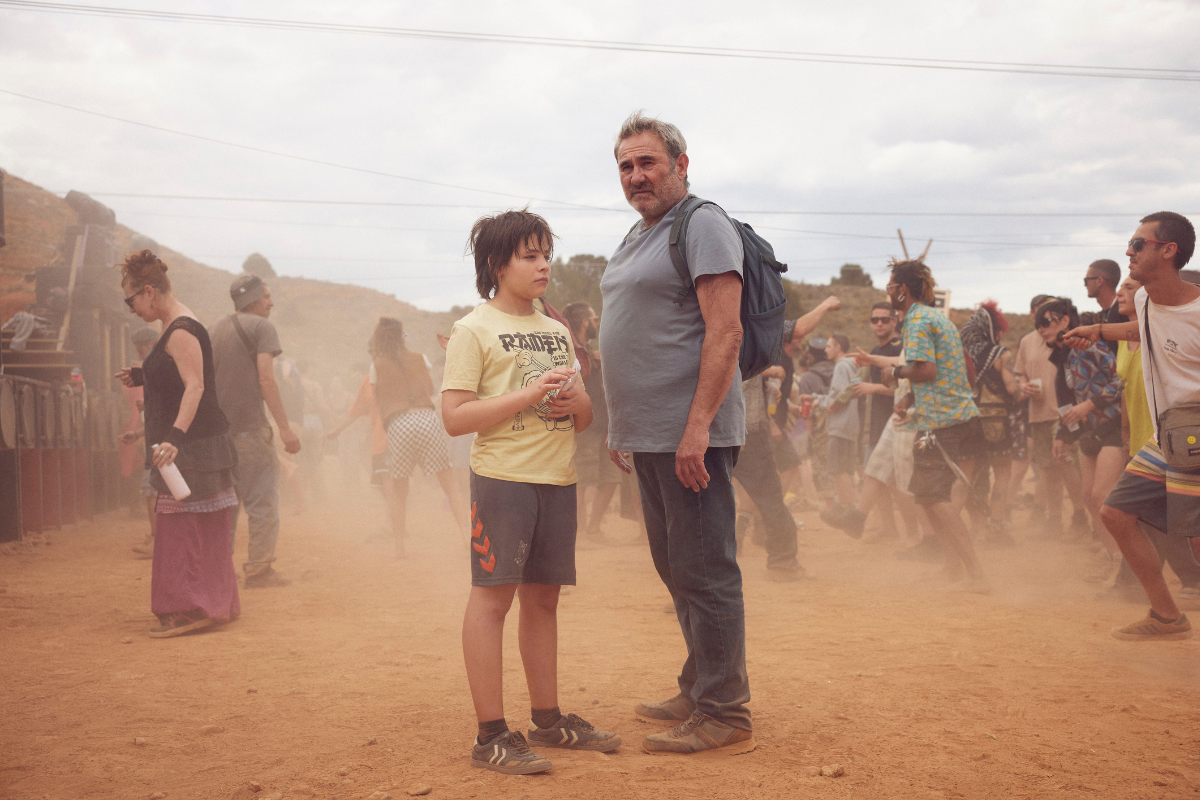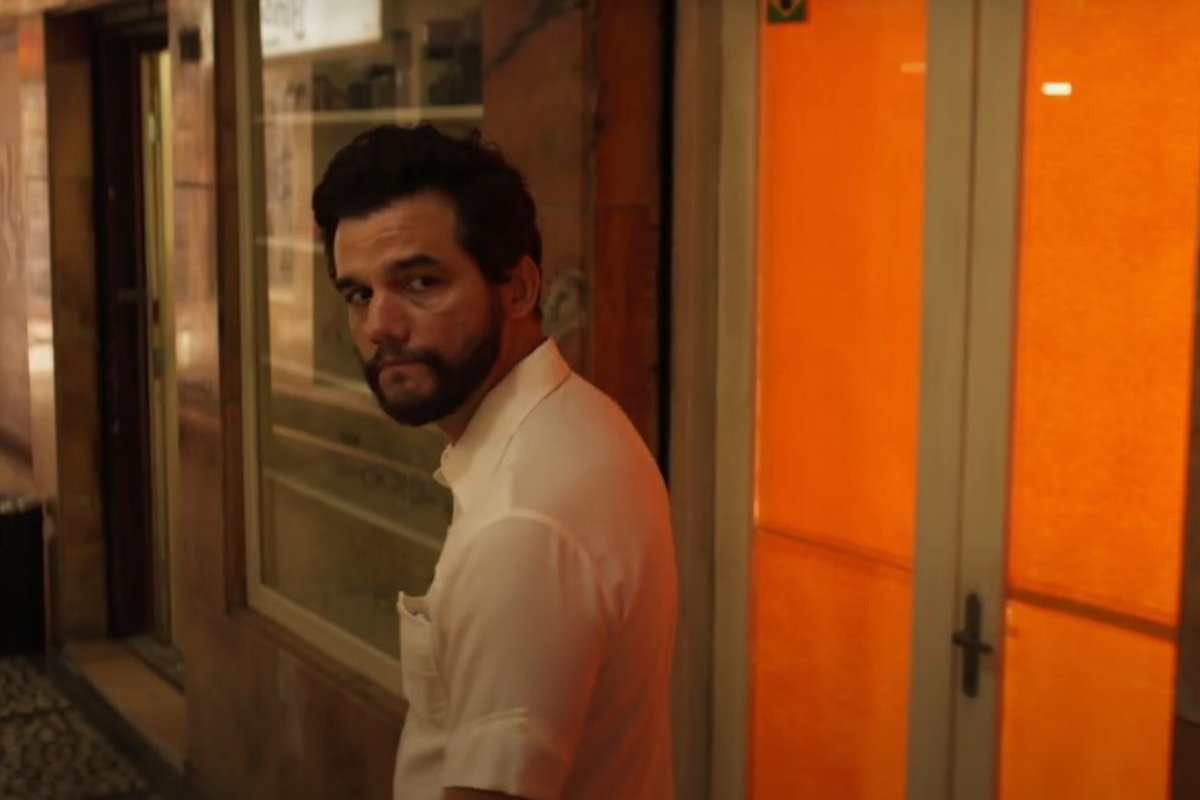UNDERSTANDING SCREENWRITING: A Great One, and Some Others.
Tom Stempel adores the miniseries ‘The Old Man,’ and comments on ‘Bullet Train,’ ‘Nope,’ and ‘Belfast.’
This is How It Should be Done.
The Old Man (2022. Created and written by Robert Levine and Jonathan E. Steinberg, based on the novel by Thomas Perry. Seven one-hour episodes)
If you have read this column more than two or three times, you know that I hate movies that move too slowly. I love movies that zip along so fast I have to run to keep up.
If you have read this column more than two or three times, you will also know that I hate mini-series that go on, and on, and on.
So now we have The Old Man, which goes at a pace so slowly a snail could catch up to it. And it is wonderful. And it is only seven hours long and not a minute longer than it needs to be.
You see, it can be done. I would encourage you to look this up on Hulu and study it as a master class in screenwriting.
(And a master class in directing as well. There are four directors and they all manage to maintain the same consistent tone. But I will leave that to people who want to write as seriously about directing as I do about screenwriting.)
We spend most of the first hour, yes, almost the entire hour, watching Dan Chase, a man in his seventies at least, maybe older, go about his daily routine. He lives in a house out in the woods and has two wonderful large dogs. Nothing at all out of the ordinary about him. Except that he is played by Jeff Bridges and you cannot take your eyes off him. Just watching him pad around the house is compelling enough in its own quiet way. That’s because the writers and director know how long they can take showing Dan’s everyday life before the shit hits the fan.
And boy does it ever hit the fan. A prowler is sneaking into the house. Dan pulls a gun and blows him away, quickly and efficiently. This is not Dan’s first rodeo. We see him make a convincing case to the cops who come to investigate that it was just a random burglar, but we can tell by his actions that he knows it was a lot more than that. Dan packs up quickly and leaves, taking the dogs with him. And us, along for what promises to be an entertaining ride. Now you know how to start your miniseries.
[Sins and Sensuality: An Interview with ‘Under the Banner of Heaven’ Director Isabel Sandoval]
In the second episode, we find Dan renting a granny flat owned by Zoe, a nice, attractive, middle-aged woman. I have not read Perry’s novel, but I gather from what I read about it Zoe is sort of a block of wood in the book. That’s not true in the series. Levine and Steinberg have made her interesting from that start by making her curious about Dan and trying to figure out what’s going on with him. The writers stretch this out over the whole series since there are layers and layers and more layers to Dan. Zoe is beautifully written to help us get into Dan.
It also helps she is played by Amy Brenneman whose credits include NYPD Blue, Judging Amy, and the film Heat (1995). This is the best performance of hers I have ever seen. She understands and appreciates that this is not just the standard girlfriend along for the ride. The writers have given Zoe a lot of textures for Brenneman to explore.
Bridges and Brenneman are not the whole show. Dan, in trying to find out what the hell is going on, contacts an old colleague of his from their days in Afghanistan. He is Harold Harper, who was with the CIA in Afghanistan and is now with the FBI. Harper does not quite know what’s going on, or at least as much as he should or wants to. He is played by John Lithgow, and the part is as well written by the writers as Dan and Zoe are. Well, if you are going to hire Lithgow, you’d better take advantage of his skill set.
Harper has a couple of assistants, Abigail and Raymond. The latter is the sort of jerk you find in many offices and a troublemaker. Always smart to write in some character like that to keep things lively. Abigail is quieter and smarter. As the series continues, she gets more and more involved in the case of Dan. She is played by Alia Shawkat, formerly Maeby of Arrested Development. You may wonder why they have hired her for what starts out as a general assistant role. Abigail has many, many layers. I could tell you what they are, but then I’d have to kill you.
OK, OK, I’ll tell you two of Abigail’s layers and all I will do is break your arm. She is Dan’s daughter. And Harper doesn’t know it.
We also get a lot of flashbacks to Dan and Harper’s days in Afghanistan, and if you thought news coverage of Afghanistan was complicated, wait until you see what is going on with whom and why. And how the writers make it as clear as it needs to be so you think you know where you are until you don’t know.
Dan and Harper mostly talk on the phone during the first six episodes, but the seventh episode has them together in a car on their way to…well, I won’t tell you that either. Enough that you know that you are going to spend time in a car with Jeff Bridges and John Lithgow at the height of their powers. Levin and Steinberg know as writers they have to deliver the goods, and they do.
And then there is Abigail…
I was serious when I told you to watch this as a master class in screenwriting. You will learn as much from studying this as from any ten “How to” books you have wasted your money on.
Way…Wa-a-a-y…Wa-a-a-a-a-y Over the Top.
Bullet Train (2022. Screenplay by Zak Olkewicz, based on the novel by Kôtarô Isaka. 127 minutes)
Someone once asked Charles Bennett’s Fat English Friend why he always made movies set on trains (The 39 Steps [1935], The Lady Vanishes [1938], Shadow of a Doubt [1943], North by Northwest [1959]) and not on airplanes. Hitch could have replied that there was a nice plane crash at the end of Foreign Correspondent (1940), but he pointed out that people can get on and off trains while they are in motion but not planes.
Bullet Train is a newer version of a Hitchcock train movie, a much newer version. Hitch only had one or two villains on his trains, but Olkewicz has five assassins or teams of assassins. And he knows how to write them all differently, which gives the actors a lot to play.
The main character Ladybug has gone all zen and is trying to make a better life for himself and others. Boy, does that give Brad Pitt a lot to play, both in terms of dialogue and reactions. Fortunately, Pitt the Movie Star shows up and carries the movie.
In writing about The Lost City (2022) here, I said that the middle of it sags because the writing for the two stars slacks off. That does not happen here.
There is of course a train wreck at the end of the picture, and just when you have accepted the fact that you will have to make do with such a dinky train wreck, they uncork the second one, and it is a doozy. Cecil B. DeMille, who loved train wrecks (Union Pacific [1939], The Greatest Show on Earth [1952]), would have been proud.
Speaking as we were of Hitchcock, this film’s Macguffin (what everybody is chasing) is a suitcase with a lot of money. To show you how crucial it is to your enjoyment of the film, I should tell you I cannot for the life of me remember what happens to it.
If you are not familiar with the term “bullet train,” it is a high-speed train developed in Japan in the 1960s. It made its first screen appearance in a great paying-the-ransom scene in Akira Kurosawa’s classic 1963 High and Low. Hitch would have proud of that one as well.
Better Than Us, Not as Good as Get Out.
Nope (2022. Written by Jordan Peele. 130 minutes)
I loved Peele’s Get Out (2017) as you can see from my review here. I did not love his Us (2019) as you can see from my review here. As I wrote in the review of Us, "In Get Out, Peele had worked out the social comment in the story and characters, but here what we get are the mechanics of horror without the philosophical ideas Peele had hoped he written.”
There is a similar problem in Nope. Peele seems to want to critique the influence of the media, but that fades away as the horror, or sci-fi, elements take over. We start out at the Haywood’s Hollywood Horses run by O.J. Haywood. The ranch, as the name tells you, provides horses for the entertainment business. We get a nice satirical scene where one of the horses misbehaves on a shoot of some kind. So O.J. sells the horse to Ricky Park, the owner of a cheesy old-time western amusement park. We get a lot more of Ricky than we need to, especially since he does not figure much in the second half of the movie. We keep coming back to a chimp on a TV show the younger Ricky was on. The chimp went on a reign of terror on the set. I cannot even guess why Peele goes back to that as much as he does.
Pretty soon O.J. and his smart-assed sister Emerald begin to suspect there are flying saucers in the clouds over the ranch. At this point, Peele seems to drop most of the satire of the media and the picture turns into a conventional sci-fi horror movie. There are a lot of things that go bump in the night in the house, barn, and stables. By the end of the film O.J., Emerald, a TV store salesman, and a recluse with a hand-cranked movie camera are fighting off the saucers.
Peele is so into the generic sci-fi stuff that he misses what he could do with the material. We have no ideas who the aliens in the saucers are? Are they horrid, icky monsters? Is one of them the grandson of Klaatu from The Day the Earth Stood Still (1951) come to warn us about global warming? Is one of them E.T.?
Having set up the connections to the media, Peele then ignores them in the second half of the film. Look what Billy Wilder did with the crowd gathered around a media event in Ace in the Hole (1951).
Having said the script is mess, I must admit that Peele’s direction (of the actors, the composition of shots, the movement of the camera) is first-rate. Maybe for his next film, he should hire a better writer.
Worthy of Its Win of a You Know What.
Belfast (2021. Written by Kenneth Branagh. 98 minutes)
A few columns ago I wrote about CODA (2021) after it won the Academy Award for Best Adapted Screenplay this year. I mentioned that I had not yet seen Belfast, which had won in the Original Screenplay category.
I had not gotten around to seeing Coda because it sounded like a 1970s disability-of-the-week television movie. As I said in my review, which you can read here, it is better than that. I hadn’t seen Belfast for a similar reason. It sounded like a lot of other nostalgic childhood-of-the-author movies. It particularly seemed like John Boorman’s 1987 charmer Hope and Glory, which was a romanticized look at Boorman’s childhood during World War II. I saw it with my late mother-in-law, who was a young mother in England during the war, and she assured me parents never let their kids go out and play in bomb sites the way they did in the film. I did mention to her that it was Boorman’s own view of his past and she was still not convinced.
Branagh’s film (he also directed) is set in the late sixties in, well, Belfast, Ireland, and one big thing in its favor is that he avoids Boorman and others’ nostalgia. Belfast is a much more hard-nosed look at the violence between the Catholics and the Protestants at the time. It is a more personalized kind of violence that directly affects Buddy and his family in a variety of ways.
The film starts with a series of views of modern Belfast in color, then the camera pans up a fence in color, and over the top of it we see, in black and white, the street where Buddy and his family live. Most of the rest of the film is in black and white, with a few notable and amusing exceptions. Black and white is not used here to nostalgize the past, but to make the past look like it does in most photographs of the time. Branagh also avoids narration, which is often used to set a nostalgic tone, as in Philip Dunne’s great screenplay for How Green Was My Valley (1941).
Often in movies like this, it is very obvious who the kid is who grows up to be the artist. Branagh makes it clear but in two subtle ways. He has cast Jude Hill as Buddy, and Hill looks like he could grow up to be Kenneth Branagh. More importantly, Branagh has written Buddy to be the most curious person in the film. He is constantly observing what is going on, and we enjoy watching him watching the world. He is the most enchanted of his family when they go to the movies and live theatre. Branagh does not lay it on too heavily.
In fact, Branagh does not lay anything on too heavily, even the conflict between the Catholics and the Protestants. Yes, there is often violence or the threat of violence, but that balances out with the warmth of the family scenes. The family members are sharply drawn and Branagh has cast them perfectly. Buddy’s dad is played by Jamie Dornan, and this should definitely help him survive the three Fifty Shades movies he starred in. The grandmother is Judi Dench and up until her last close-up, it’s a performance that any actor could give. You will see why Branagh hired Dame Judi in her last shot.
Many nostalgic films about childhood have very loose structures, but Branagh has a solid throughline: is the family going to leave Belfast? It is brought up in a variety of ways and then pays off in the end (see Dench, Judi, final line).
Learn more about the craft and business of screenwriting from our Script University courses!
Tom Stempel is a Professor Emeritus at Los Angeles City College, where he taught film history and screenwriting from 1971 to 2011. He has written six books on film, five of them about screen and television writing. You can learn more about his books here. His 2008 book Understanding Screenwriting: Learning from Good, Not-Quite-So- Good, and Bad Screenplays evolved into this column. The column first appeared in 2008 at the blog The House Next Door, then at Slant, and then Creative Screenwriting before it found its forever home at Script.
In the column he reviews movies and television from the standpoint of screenwriting. He looks at new movies, old movies, and television movies and shows, as well as writing occasional other items, such as appreciations of screenwriters who have passed away, plays based on films, books on screenwriting and screenwriters, and other sundries.
In September 2023 Tom Stempel was awarded the inaugural Lifetime Achievement in the Service of Screenwriting Research by the international organization the Screenwriting Research Network.






